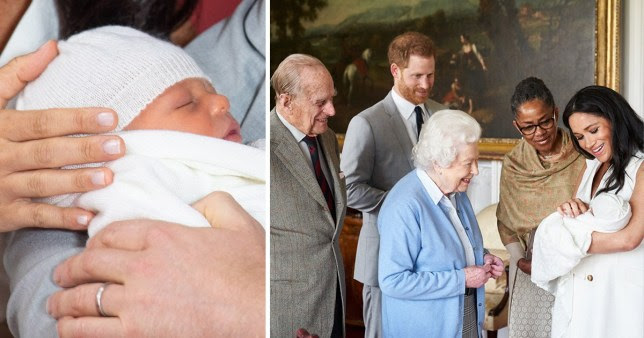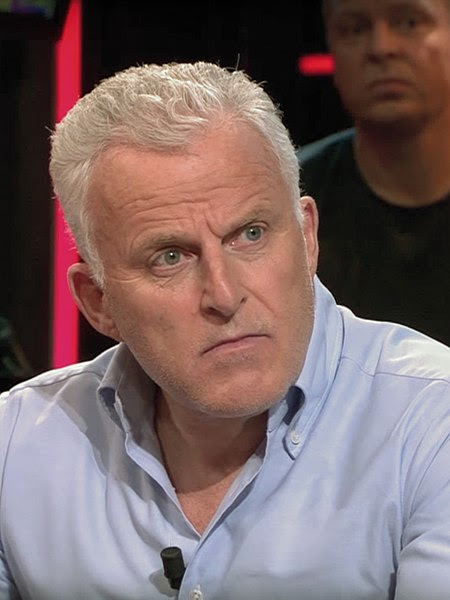
JULIAN ASSANGE ARRESTED/ATTACK ON FREEDOM OF PRESS
http://archives-2001-2012.cmaq.net/en/node/43095.html
JULIAN ASSANGE ARRESTED/ATTACK ON THE FREEDOM OF PRESS
WIKILEAKS HOPE FOR THE VICTIMS OF THE POWER POLICY OF SUPERPOWER USA AND THEIR ALLIES
FREEDOM OF SPEECH AND PRESS/
FIRST AMENDMENT UNITED STATES CONSTITUTION
Congress shall make no law respecting an establishment of religion, or prohibiting the free exercise thereof; or abridging the freedom of speech, or of the press; or the right of the people peaceably to assemble, and to petition the Government for a redress of grievances. – Wikipedia
In the race between secrecy and truth, it seems inevitable that truth will always win”
Rupert Murdoch
“In a time of universal deceit, telling the truth becomes a revolutionary act.”
~George Orwell
This world is full of injustice.
Julian Assange is in jail, while top American and allies war-criminals are free to go
Wise woman
What was feared by many adherents of whistleblower site Wikileaks has come to reality.
Julian Assange, founder of Wikileaks, has been arrested by the British police, after he voluntarily surrendered [1]
O fficially this arrest was on behalf of the Swedish Justice, which had issued an European Arrest Warrant agianst him with charges of alleged rape and molestation of two Swedish women[2]
On request of the Swedish police Interpol also issued an International Arrest Warrant against him [3]
However it is clear, that this arrest is motivated by the political interests of the USA and their allies, considering the spectacular revealings of Wikileaks and the American political hysteria, from extreme right wing death treaths and hunting Assange down ”like a terrorist”, [4] till governmental plans to prosecute him [5]
Also State Secretary of Defense mr Gates called the arrest of Assange ”good news” [6]
Releasement on bail :
Initially it seemed, that Swedish Justice appealed against the decision of the UK Court [dd 14th december] to grant bail to Assange. [7]
Mr Stephens, solicitor of Assange, spoke of the ”continuing vendetta by the Swedes” [8]
Later however rumour spread, that the British prosecution had appealed
However, Assange is released on bail now [9]
IN DEFENSE OF THE POWERLESS :
Wikileaks, which has been founded by Assange, is an international new media with a whistlerblower function, revealing otherwise unavailable documents and thus exposing injustice, committed by States, especially Superpower the USA and their allies [10]
As a new medium, Wikileaks has won several prices, as in 2009, Amnesty International’s UK Media Award [in the category ”New Media”] for the 2008 publication of “Kenya: The Cry of Blood – Extra Judicial Killings and Disappearances” [11]
RELEASED DOCUMENTS
What has infuriated the US and allies are the released documents about US and alles warcrimes and scandals about secret diplomacy
This happened in close cooperation with The New York Times, The Guardian and Der Spiegel, which publicized them
And although Assange has been arrested, the releasements go on
An overview:
Video in US killings in Iraq:
”Exposing warcrimes is not a crime!”
Bradley Manning Support Network
In April 2010, Wikileaks posted video from an American airstrike on Badghdad [2007] [12] in which Iraqi civilians and journalists were killed by US forces, including a Reuters journalist and his driver, on a website called Collateral Murder [13]
A courageous American soldier with a conscience, Sgt Bradley Manning, is supposed to have leaked it
He now possibly faces a trial and a yearlong prison sentence [14]
Afghan war-logs
In July the same year, Wikileaks released Afghan War Diary , a compilation of more than 76,900 documents about the War
in Afghanistan [15], not previously available for public review.
Iraq war-logs
In October, Wikileaks released a package of almost 400,000 documents called the Iraq War [16] in coordination with major
commercial media organisations [17]
As well as the Afghan as Iraq war-logs documents showed shocking details about American and allied warcrimes as torture practices
The moat horrifying however is the total American indifference for Afghan and Iraqi civilian lives
US Embassy Cables
In November, Wikileaks began releasing US State Department diplomatic cables [18]
Those are the most important revelations, internationally known
However, already in 2007 Wikileaks disclosed the ”Standard Operation Procedure for Camp Delta”, a guideline for the American military, how to handle prisoners in Guantanamo Bay [19]
Shocking details were the detention [by arrival] of prisoners in an isolation cell [in the Manual called ” the’Brhaviour Managment Plan”] ’to make them more ”cooperative” for interrigations
Placing in isolation was litterary meant to ”ENHANCE AND EXPLOIT THE DISORIENTATION AND DISORGANISATION BY A NEWLY ARRIVED DETAINEE” [20]
In other words: Cruel and inhumane treatment
Lack of access to the Red Cross:
The manual also revealed, that some of the prisoners were denied access to the Red Cross
Also on arrival, the prisoners were denied basics and access to a Qu’ran [21]
CREDIBILITY:
REACTIONS OF STATES AND HUMAN RIGHTS WATCH
Although it is impossible for the common civilian to control the hundred and thousands of document on their credibility, a clear confirmation is been showed in the website ”Collateral Murder, where the video proof of the US attack in Iraq, where 13 civiilians were killed, is clear [22]
Besides, this Iraq document and thousands of others have been controlled by a team of journalists, who work with Wikileaks
Also the close cooperation with quality papers like the New York Times, Der Spiegel and The Guardian, which have their own investigative journalists, confirms the credibility
The Guardian has since then published all Wikileaks documents in her paper [23]
Credibility is also shown by the aggressive and hostile reactiions of several States, especially the USA, which seek to prosecute Assange on the ground of an old ”Espionage Act” , which is ridiculous, since a native Australian and not in American government service, he can’t be a ”spy”
This American use of the Espionage Act to silence critics is not new:
Many critical intellectuals, journalists, film producers and pacifist religious figures were prosecuted. [24]
Human Rights Watch has emphasized her concern about the planned US prosecution in a letter to president Obama, that prosecitung Assange is a violation of the freedom of press and expression [25]
But despite the furious reactions of governing States, no charge on the ground of defamatiion or slander [the socalled libel suit] has followed
THE ”RAPE” CASE
”There’s something rotten in the State of Denmark”
Hamlet, Shakespeare
Let’s make this clear: Nobody is above the Law
When there is really substantial and hard evidence, that Assange should have raped this women, he should be prosecuted and, by enough proof, condemned after a fair trial
However, there are clear indications, that this whole case is politically motivated
That would not be the first or the last time:
Using rape and sexual contact as a political or personal means is as old as Mankind
In the Old Testimony the wife of Potiphar accused Joseph, son of Patriarch Jacob, than slave in Egypt, of rape, when he refused to be intimate with her [26]
Whistleblower Vanunu, who exposed Israel’s nuclear power, was trapped by a gallgirl and so was abducted by Israel, which led to a yearlong imprisonment [27]
From the very start, this real or alleged ”rape case” had some strange and clumsy aspects, which make the whole case look fishy
After two Swedish women, in press called ”Miss A” and ”Miss W” went to the police with accusations about rape and molestation, at 21 august Swedish police opened an investigation against Assange [28]
Within hours, Stockholm’s chief prosecutor Eva Finne, reviewed the case and dropped the rape investigation, saying there was insufficient evidence to suggest rape [the charge on molestation, a far lesser crime, had been maintained] [29]
However, despite the dropping of the case, at 1 september, Swedish Justice reopened the rape case again [30]
At least that sounds very strange
But there were more fishy elements on this case
Accompanied with the European Arrest Warrant, Interpol issued an International Arrest Warrant against Assange [30 november], which is highly out of proportion, seen the charges against him
Then, on request of the British Serious and Organised Crime Agency, Sweden issued a new Arrest Warrant because of incorrectness of the earlier one [31]
Allegations of the women:
Without going into details, at least some of the allegations of the women were dubious
For example:”Miss A”
Despite her accusations ”Miss A” organised a party for the same man whe accused of rape and molestation
And moreover:
Even after her alleged ”rape” or ”molestation” she let him stay in her appartment [32]
Timing
Not long after the revelations of Wikileaks Afghan war logs, the rape accusations of Miss A and W followed
What is a better moment for slander against Wikileaks and his founder, seen American hysterical reactions?
Assange himself commented on Twitter
”The charges are without basis and their issue at this moment is deeply disturbing.” [33]
Of course there is no proof for a political set-up, but overviewing the strang behaviour of Swedish Justice, the out of propiortion Interpol Arrest Warrant, the initially ”wrong” Swedish Arrest Warrant, the contradictional story of the women involved and the ”timing” of the charges, raise a serious doubt and show political intrigue.
OPERATION PAYBACK
CYBERATTACKS ON LARGE CORPORATIONS, CUTTING OFF WIKILEAKS OF FINANCIAL MEANS
PAMPHLET OF ANONYMOUS
WE ARE ANONYMOUS. WE ARE LEGION
Several corporations now have been involved in the censoring of Wikileaks
The censoring of free speech and free information
The censoring of a free world
Amongst these corporatiions are MasterCard, VISA, PayPal, Amazon- some of the largest corporations in the world
We, the people, will make a stand, no matter how large these corporations are
We, the people, won’t budge for government pressure
We, the people, won’t fall for bribery and corruption
We, the people, won’t submit to this attempt by our so-called leaders to protect their own interests and powerWe, the people, will fight back. We will not forgive. We will not forget
Expect us
Source: INDYMEDIA.NL [www.indymedia.nl]
http://www.indymedia.nl/nl/2010/12/72120.shtml
Apparently due to American political pressure, large corporations like Mastercard, Visa, Paypal, Amazon and the Swiss Bank cutt of the financial means of Wikileaks [34]
Later the Bank of America joined [35]
Due to this cutting off of financial means, Assange was obliged to sell the rights of his autobiography for his legal fight in Sweden and to keep the website afloat [36]
As a reaction, a group of hackers [socalled ”hacktivists”] of the Group ”Anonymous” systematically attacked and attacks large corporations like Mastercard, Visa, Paypal and Swiss Bank,to protect the right to free information [37]
Also the office of Mr Borgstrom, the laywer of the two women who accused Assange of socalled ”rape” has been under attack [38]
Dutch authorities arrested and later released a Dutch 16 year old, in connection with the Cyberattacks
Also a Dutch man [19 year old] had been arrested [and later released] in connection with an attack on the Dutch public prosecution office, in connection with the arrest of the 16 year old [39]
Cyberattacks:
Attacks on the laywer of the two Swedish women are unacceptable, since any person has a right to a laywer, however controversial his or her case
However, although somewhat extreme, the Cyberattacks on the financial corporations which cut off Wikileaks, are legitimate resistance, since Mastercard and co are supporting American government policy against Wikileaks, violating freedom of press
In this respect and given the American hatred policy against Wikileaks, also attacks on American governmental organisations is legitimate.
Anonymous is an important weapon in the struggle for Wikileaks freedom of press
Also the Also UN Commissioner of Human Rights, mrs Pilay, has criticized websites, that have refused to host Wikileaks, as an attack on the freedom of expression of Wikileaks [40]
EPILOGUE
The arrest of Assange is directly connected with the American political interest to stop the revelations of Wikileaks at all costs
Therefore it is an attack on the freedom of press and the freedom of expression
Journalism feels that, by working together with Wikileaks and saving material, as The Guardian and other papers do
But there’s more at stake:
Whole Internetjournalism may be treathed
When Assange is to be extradited to Sweden and in the horrorscenario, that Sweden extradites him to the USA [41], after British consent [42], there is more to it than a probably unfair US trial
From that moment all critical Internetjournalists, who write unpleasant truths about the US and human rights violating allies, can be prosecuted, persecuted and intimidated
The freedom of press and speech, consolidated in the first Amendment of the American Constitution, will be a dead letter.
However, most bizarre point:
Real or alleged American warcriminals are free to go, while the messengers are shooted at [42]
BUT US AND ALLIES, MAKE NO MISTAKE
Their dirty secrets will always be unmasked and Wikileaks, or a successor, will go on
To defend the victims of US power policy
Astrid Essed
Amsterdam
The Netherlands
NOTES
[1]
ARTICLE JULIAN ASSANGE
THE AUSTRALIAN
DON’T SHOOT THE MESSENGER FOR REVEALING UNCONFORTABLE TRUTHS
8 DECEMBER 2010http://www.theaustralian.com.au/in-depth/wikileaks/dont-shoot-messenger-…
”At 9.15am last Tuesday a thin, white-haired figure left the Frontline Club, the west London establishment dedicated to preserving freedom of speech, and voluntarily surrendered to police.”
Source:
THE GUARDIAN
WIKILEAKS BACKLASH: THE FIRST GLOBAL CYBER WAR HAS BEGUN
11 DECEMBER 2010http://www.guardian.co.uk/media/2010/dec/11/wikileaks-backlash-cyber-war
THE GUARDIAN
JULIAN ASSANGEhttp://www.guardian.co.uk/media/julian-assange
[2]
BBC NEWS
Q & A
ARREST OF WIKILEAKS FOUNDER JULIAN ASSANGE
8 DECEMBER 2010http://ww w.bbc.co.uk/ news/uk-11949 771
”Assange, a 39-year-old Australian, had earlier handed himself in to British police after Sweden had issued a European Arrest Warrant for him. Assange, who denies the allegations, will remain behind bars until a fresh hearing on December 14.”
Source:
REUTERS
WIKILEAKS FOUNDER ASSANGE REFUSED BAIL BY UK COURT
7 DECEMBER 2010http://www.reuters.com/article/idUSTRE6B61PX20101207
[3]
THE GUARDIAN
WIKILEAKS: INTERPOL ISSUES WANTED NOTICE FOR JULIAN ASSANGE
30 NOVEMBER 2010http://www.guardian.co.uk/media/2010/nov/30/interpol-wanted-notice-julia…
[4]
AMERICAN POLITICAL HATRED HYSTERIA AGAINST WIKILEAKS AND ASSANGE
THE GUARDIAN
WIKILEAKS BACKLASH
THE FIRST GLOBAL CYBERWAR HAS BEGUN
CLAIM HACKERS
11 DECEMBER 2010http://www.guardian.co.uk/media/2010/dec/11/wikileaks-backlash-cyber-war
THE GUARDIAN
JULIAN ASSANGE LIKE A HI-TECH TERRORIST, SAYS JOE BIDEN
19 DECEMBER 2010http://www.guardian.co.uk/media/2010/dec/19/assange-high-tech-terrorist-…
MAIL ONLINE:
HUNT WIKILEAKS CHIEF DOWN LIKE OSAMA BIN LADEN:
SARAH PALIN DEMANDS ASSANGE IS TREATED LIKE AL QAEDA TERRORIST
1TH DECEMBER 2010http://www.dailymail.co.uk/news/article-1334341/WikiLeaks-Sarah-Palin-de…
POL ITICO NEWS
REP. PETER KING:
PROSE CUTE WIKILEAKS/JULIAN ASSANGE
29 NOVEMBER 2010http://www.politico.com/news/stories/1110/45667.html
PITCH BLOGS
RIGHTBLOGGERS ON WIKILEAKS: KILL JULIAN ASSANGE, BUT NOT TILL WE USE HIS STUFF AGAINST OBAMA
29TH NOVEMBER 2010http://blogs.pitch.com/plog/2010/11/rightbloggers_on_wikileaks.php
THE HUFFINGTON POST
O’ REILLY: WIKILEAKS LEAKERS ARE TRAITORS, SHOULD BE EXECUTED OR SPEND LIFE IN JAIL
30TH NOVEMBER 2010http://www.huffingtonpost.com/2010/11/30/oreilly-wikileaks-leakers-execu…
VOICES
AGAINST THE AMARICAN HATRED CAMPAIGN
OPEN LETTER TO JULIA GILLARD
UNDERSIGNED BY NOAM CHOMSKY AND OTHERS
ABC NET
7 DECEMBER 2010http://w ww.abc.net.au /unleashed/41914.html
[5]
AMERICAN PLANS TO PROSECUTE ASSANGE
ARTICLE JULIAN ASSANGE
THE AUSTRALIAN
DON’T SHOOT THE MESSENGER FOR REVEALING UNCONFORTABLE TRUTHS
8 DECEMBER 2010http://www.theaustralian.com.au/in-depth/wikileaks/dont-shoot-messenger-…
THE GUARDIAN
US LOOKS TO PROSECUTE ASSANGE
6 DECEMBER 2010http://www.guardian.co.uk/world/2010/dec/06/wikileaks-cables-founder-jul…
THE NATIONAL
US EXPLORES OPTIONS TO PROSECUTE ASSANGE
3 DECEMBER 2010http://www.thenational.ae/news/worldwide/us-explores-options-to-prosecut…
”
US At torney General Er ic Holder said officials were pursuing a “very serious criminal investigation” into the matter.
Yet while Mr Assange has widely acknowledged his role in disseminating classified documents, legal experts say US criminal statutes and case law do not cleanly apply to his case.
US espionage law has been used to prosecute US officials who provided secrets to foreign governments or foreign spies who pursued US secrets.
But Mr Assange, an Australian citizen, former computer hacker and self-described journalist, did not work for the US government, has no known links to foreign governments, and operates on the internet, by all accounts far from US soil”SOURCE:
BBC NEWS
BARRIERS TO POSSIBLE US ASSANGE PROSECUTION
8 DECEMBER 2010http://www.bbc.co.uk/news/world-us-canada-11952817
THE INDEPENDENT
US MAY PASS NEW LAW TO PROSECUTE ASSANGE
12 DECEMBER 2010http://www.independent.co.uk/news/world/americas/us-may-pass-new-law-to-…
”
US Attorn ey General Eric Holder said officials were pursuing a “very serious criminal investigation” into the matter.
Yet while Mr Assange has widely acknowledged his role in disseminating classified documents, legal experts say US criminal statutes and case law do not cleanly apply to his case.
US espionage law has been used to prosecute US officials who provided secrets to foreign governments or foreign spies who pursued US secrets.
But Mr Assange, an Australian citizen, former computer hacker and self-described journalist, did not work for the US government, has no known links to foreign governments, and operates on the internet, by all accounts far from US soil”SOURCE:
BBC NEWS
BARRIERS TO POSSIBLE US ASSANGE PROSECUTION
8 DECEMBER 2010http:/ /www.bbc.co. uk/news/worl d-us-canada-1 1952817< /A>
THE GUARDIAN
WIKILEAKS CABLES: US ESPIONAGE LAW
1TH DECEMBER 2010http://www.guardian.co.uk/world/2010/dec/01/wikileaks-cables-us-espionag…
THE GUARDIAN
JULIAN ASSANGE ARREST: HOW THE EXTRADITION PROCESS WORKS
7TH DECEMBER 2010http://www.guardian.co.uk/media/2010/dec/07/julian-assange-arrest-extrad…
”
There is a Sweden-US extradition treaty, signed in 1961, which provides a legal foundation for extraditions between the countries. But there is still discretion for Sweden to refuse extraditions for “political offences” or where the suspect has reason to fear persecution on account of their membership of a social group or political beliefs.
The treaty also specifies the offences which qualify for extradition, and espionage is not one of them. If the treaty doesn’t apply, there would still be scope for the country to agree to his extradition to the US – Swedish law permits extradition more generally to countries outside Europe, but this could only take place after the current rape proceedings were concluded.”SOURCE:
THE GUARDIAN
JULIAN ASSANGE’S EXTRADITION
WHAT HAPPENS NEXT?
8 DECEMBER 2010http://www.guardian.co.uk/law/afua-hirsch-law-blog/2010/de c/08/julian-a ssange-extrad ition-what-ne xt
THE GUARDIAN
A SAD DAY FOR THE US IF THE ESPIONAGE ACT IS USED AGAINST WIKILEAKS
15 DECEMBER 2010http://www.guardian.co.uk/commentisfree/libertycentral/2010/dec/15/wikil…
[6]
GOOD NEWS REACTION OF THE US DEFENCE SECRETARY ROBERT GATES:
”The Pentagon welcomed the arrest, with US D efence Secretary Robert Gates saying on a visit to Afghanistan that it was “good news”.
SOURCE:
BBC NEWS
WIKILEAKS FOUNDER ASSANGE REFUSED BAILhttp://www.bbc.co.uk/news/uk-11937110
[7]
”
4.1 8pm: Speaking outside the court, Ken Loach said it was “good news” that Assange had been granted bail.Clearly, if the Swedish government opposes bail it will show there is some vindictiveness beyond this case. It will show there is some political element that goes beyond the case.”
Source:
THE GUARDIAN
JULIAN ASSANGE GRANTED BAIL/LIVE UPDATES
14TH DECEMBER 2010http://www.guardian.co.uk/news/blog/2010/dec/14/wikileaks-julian-assange…
[8]
”Mr Assange’s solicitor, Mark Stephens, said after the court appearance the bail appeal was part of a “continuing vendetta by the Swedes”.
Source:
BBC NEWS
WIKILEAKS FOUNDER JULIAN ASSANGE FREED ON BAIL
16TH DECEMBER 2010http://www.bbc.co.uk/news/uk-12005930
[9]
BBC NEWS
WIKILEAKS FOUNDER JULIAN ASSANGE FREED ON BAIL
16TH DECEMBER 2010http://www.bbc.co.uk/news/uk-12005930
[10]
THE GUARDIAN
WIKILEAKShttp://www.guardian.co.uk/media/wikileaks
WIKIPEDIA
WIKILEAKShttp://en.wikipedia.org/wiki/WikiLeaks
[11]
WIKIPEDIA
WIKILEAKS”WikiLeaks has won a number of awards, including the 2008 Economist magazine New Media Award.[10] In June 2009, WikiLeaks and Julian Assange won Amnesty International’s UK Media Award (in the category “New Media”) for the 2008 publication of “Kenya: The Cry of Blood – Extra Judicial Killings and Disappearances”,[11] a report by the Kenya National Commission on Human Rights about police killings in Kenya.[12] ”
http://en.wikipedia.org/wiki/WikiLeaks
EDITOR’S WEBLOG
WIKILEAKS RECEIVES AMNESTY INTERNATIONAL’S NEW MEDIA AWARD
9TH JUNE 2009http://www.editorsweblog.org/newsrooms_and_journalism/2009/06/wikileaks_…
AMNESTY INTERNATIONAL MEDIA AWARDS 2009
http://www.amnesty.org.uk/uploads/documents/doc_20539.pdf
[12]
WIKIPEDIA
JULY 12, 2007, BAGHDAD AIRSTRIKEhttp://en.wikipedia.org/wiki/12_July_2007_Baghdad_airstrike
”David Schlesinger, Reuters editor in chief, said Tuesday that the video was disturbing to watch “but also important to watch.” He said he hoped to meet with the Pentagon “to press the need to learn lessons from this tragedy.”
Source:
THE NEW YORK TIMES
AIRSTRIKE VIDEO BRINGS NOTICE TO A WEBSITE
6TH APRIL 2010http://www.nytimes.com/2010/04/07/world/07wikileaks.html
[13]
WIKILEAKS
COLLATERAL MURDERhttp://www.collateralmurder.com/
WIKIPEDIA
JULY 12, 2007 BAGHDAD AIRSTRIKEhttp://en.wikipedia.org/wiki/Collateral_murder#Leaked_video_footage
[14]
WIKILEAKS
BRADLEY MANNINGShttp://en.wikipedia.org/wiki/Bradley_Manning
BRADLEY MANNING SUPPORT NETWORK
http://www.bradleymanning.org/
[15]
WIKIPEDIA
AFGHAN WAR DOCUMENTS LEAKhttp://en.wikipedia.org/wiki/Afghan_War_Diary
THE GUARDIAN
AFGHANISTAN: THE WAR LOGShttp://www.guardian.co.uk/world/the-war-logs
[16]
THE GUARDIAN
IRAQ: THE WAR LOGShttp://www.guardian.co.uk/world/iraq-war-logs
[17]
WIKIPEDIA
WIKILEAKShttp://en.wikipedia.org/wiki/WikiLeaks
[18]
THE GUARDIAN
US EMBASSY CABLEShttp://www.guardian.co.uk/world/series/us-embassy-cables-the-documents
THE GUARDIAN
THE US EMBASSY CABLES
THE DOCUMENTS
http://www.guardian.co.uk/world/series/us-embassy-cables-the-documents
[19]
THE GUARDIAN
MANUAL EXPOSES DIVIDE-AND-RULE TACTICS IN CAMP DELTA
15TH NOVEMBER 2007http://www.guardian.co.uk/world/2007/nov/15/guantanamo.usa?INTCMP=SRCH
[20]
THE GUARDIAN
MANUAL EXPOSES DIVIDE-AND-RULE TACTICS IN CAMP DELTA
15TH NOVEMBER 2007http://www.guardian.co.uk/world/2007/nov/15/guantanamo.usa?INTCMP=SRCH
[21]
THE GUARDIAN
MANUAL EXPOSES DIVIDE-AND-RULE TACTICS IN CAMP DELTA
15TH NOVEMBER 2007http://www.guardian.co.uk/world/2007/nov/15/guantanamo.usa?INTCMP=SRCH
[22]
WIKILEAKS
COLLATERAL MURDERhttp://www.collateralmurder.com/
WIKIPEDIA
JULY 12, 2007, BAGHDAD AIRSTRIKEhttp://en.wikipedia.org/wiki/12_July_2007_Baghdad_airstrike
”David Schlesinger, Reuters editor in chief, said Tuesday that the video was disturbing to watch “but also important to watch.” He said he hoped to meet with the Pentagon “to press the need to learn lessons from this tragedy.”
Source:
THE NEW YORK TIMES
AIRSTRIKE VIDEO BRINGS NOTICE TO A WEBSITE
6TH APRIL 2010http://www.nytimes.com/2010/04/07/world/07wikileaks.html
[23]
THE GUARDIAN
WIKILEAKShttp://www.guardian.co.uk/media/wikileaks
[24]
”
US Attorn ey General Eric Holder said officials were pursuing a “very serious criminal investigation” into the matter.
Yet while Mr Assange has widely acknowledged his role in disseminating classified documents, legal experts say US criminal statutes and case law do not cleanly apply to his case.
US espionage law has been used to prosecute US officials who provided secrets to foreign governments or foreign spies who pursued US secrets.
But Mr Assange, an Australian citizen, former computer hacker and self-described journalist, did not work for the US government, has no known links to foreign governments, and operates on the internet, by all accounts far from US soil”SOURCE:
BBC NEWS
BARRIERS TO POSSIBLE US ASSANGE PROSECUTION
8 DECEMBER 2010http://www.bbc.co.uk/news/world-us-canada-11952817
[25]
HUMAN RIGHTS WATCH
US: WIKILEAKS PUBLISHER SHOULD NOT FACE PROSECUTION
LETTER TO PRESIDENT OBAMA
15 DECEMBER 2010http://www.hrw.org/en/news/2010/12/14/us-wikileaks-publishers-should-not…
HUMAN RIGHTS WATCH
US: DON’T PROSECUTE WIKILEAKS FOUNDER
15TH DECEMBER 2010http://www.hrw.org/en/news/2010/12/15/us-don-t-prosecute-wikileaks-found…
[26]
WIKIPEDIA
POTIPHARhttp://en.wikipedia.org/wiki/Potiphar
[27]
WIKIPEDIA
MORDECHAI VANUNUhttp://en.wikipedia.org/wiki/Mordechai_Vanunu
[28]
THE GUARDIAN
PROSECUTION MAY DECIDE TODAY ON CHARGES AGAINST WIKILEAKS FOUNDER
24 AUGUST 2010http://www.guardian.co.uk/media/2010/aug/24/assange-wikileaks-swedish-pr…
[29]
WIKIPEDIA
JULIAN ASSANGE/SWEDISH SEX CRIME ALLEGATIONS AND ARREST WARRANThttp://en.wikipedia.org/wiki/Julian_Assange#Swedish_sex_crime_investigat…
THE GUARDIAN
RAPE WARRANT AGAINST WIKILEAKS FOUNDER ASSANGE CANCELLED
21 AUGUST 2010http://www.guardian.co.uk/media/2010/aug/21/julian-assange-wikileaks-arr…
””The fact that one prosecutor dismissed the charges against Assange and another picked them up afterwards, makes the case look fishy. The prosecuting authorities should have acted more expeditiously and speedily.”
Source:
THE GUARDIAN
JULIAN ASSANGE FURORE DEEPENS AS NEW DETAILS EMERGE OF SEX CRIME ALLEGATIONS
18 DECEMBER 2010http://www.guardian.co.uk/media/2010/dec/18/julian-assange-allegations-w…
THE GUARDIAN
JULIAN ASSANGE DEFENDS DECISION NOT TO FACE QUESTIONING IN SWEDEN
21 DECEMBER 2010http://www.guardian.co.uk/media/2010/dec/21/julian-assange-defends-decis…
[30]
See the notes under [29]
[31]
THE GUARDIAN
JULIAN ASSANGE: SWEDEN ISSUES FRESH ARREST WARRANT FOR WIKILEAKS FOUNDER
2 DECEMBER 2010http://www.guardian.co.uk/media/2010/dec/02/julian-assange-faces-arrest-…
[32]
”Assange’s supporters point out that, despite her complaints against him, Miss A held a party for him on that evening and continued to allow him to stay in her flat.
Source:
THE GUARDIAN
10 DAYS IN SWEDEN: THE FULL ALLEGATIONS AGAINST JULIAN ASSANGE
17 DECEMBER 2010http://www.guardian.co.uk/media/2010/dec/17/julian-assange-sweden
THE GUARDIAN
JULIAN ASSANGE FURORE DEEPENS AS NEW DETAILS EMERGE OF SEX CRIME ALLEGATIONS
18 DECEMBER 2010http://www.guardian.co.uk/media/2010/dec/18/julian-assange-allegations-w…
THE GUARDIAN
WIKILEAKS: THE MAN AND THE IDEA
17 DECEMBER 2010http://www.guardian.co.uk/commentisfree/2010/dec/17/wikileaks-man-idea-e…
MAIL ONLINE
SUPPORTERS DISMISSED RAPE ACCUSATION AGAINST WIKILEAKS FOUNDER JULIAN ASSANGE…BUT THE TWO WOMEN INVOLVED TELL A DIFFERENT STORY
29 AUGUST 2010http://www.dailymail.co.uk/news/worldnews/article-1307137/Supporters-dis…
WIKIPEDIA
CLAES BORGSTROM, LAWYER OF MISS A AND MISS Whttp://en.wikipedia.org/wiki/Claes_Borgstr%C3%B6m
THE GUARDIAN
Q & A: JULIAN ASSANGE ALLEGATIONS
17 DECEMBER 2010http://www.guardian.co.uk/media/2010/dec/17/julian-assange-q-and-a?intcm…
[33]
THE GUARDIAN
JULIAN ASSANGE TO BE QUESTIONED BY BRITISH POLICE
7 DECEMBER 2010http://www.guardian.co.uk/media/2010/dec/06/wikileaks-julian-assange-pol…
[34]
THE GUARDIAN
PAYPAL JOINS INTERNET BACKLASH AGAINST WIKILEAKS
4 DECEMBER 2010http://www.guardian.co.uk/media/2010/dec/04/paypal-internet-backlash-wik…
BBC NEWS
PAYPAL SAYS IT STOPPED WIKILEAKS PAYMENTS ON US LETTER
8 DECEMBER 2010http://www.bbc.co.uk/news/business-11945875
CBS NEWS
MASTERCARD PULLS PLUG ON WIKILEAKS PAYMENTS
6 DECEMBER 2010http://www.cbsnews.com/8301-503543_162-20024801-503543.html
FOX NEWS
SWISS POSTAL SYSTEM CUTS OFF WIKILEAKS BANK ACCOUNT
6 DECEMBER 2010http://www.foxnews.com/world/2010/12/06/swiss-postal-cuts-wikileaks-bank…
INDEPENDENT
WIKILEAKS PAYMENTS CUT OFF BY VISA
7 DECEMBER 2010http://www.independent.ie/breaking-news/world-news/wikileaks-payments-cu…
[35]
THE AUSTRALIAN
BANK OF AMERICA CUTS OFF WIKI;EAKS
19 DECEMBER 2010http://www.theaustralian.com.au/in-depth/wikileaks/bank-of-america-cuts-…
[36]
THE GUARDIAN
JULIAN ASSANGE TO USE £1 M BOOK DEALS FOR LEGAL FIGHT
26 DECEMBER 2010http://www.guardian.co.uk/media/2010/dec/26/julian-assange-book-deals
[37]
WEBSITE ANONYMOUS
ANONNEWSOPERATION PAYBACK: PROTESTS VIA MOUSE CLICK
9TH DECEMBER 2010http://www.h-online.com/security/news/item/Operation-Payback-protests-vi…
THE GUARDIAN
ANONYMOUShttp://www.guardian.co.uk/technology/anonymous
THE GUARDIAN
WIKILEAKS CABL ES: ANONYMOUS DECLARES ONLINE WAR AGAINST COMPANIES
10TH DECEMBER 2010http://www.guardian.co.uk/technology/2010/dec/10/wikileaks-cables-anonym…
THE GUARDIAN
WIKILEAKS BACKLASH
THE FIRST GLOBAL CYBERWAR HAS BEGUN
CLAIM HACKERS
11TH DECEMBER 2010http://w ww.guardian. co.uk/media/2 010/dec/11/wi kileaks-back lash-cyber-wa r
BELFAST TELEGRAPH
WIKILEAKS: PALIN, SWEDEN AND AMAZON FACE ANONYMOUS HACKERS ONSLAUGHT
10 DECEMBER 2010http://www.belfasttelegraph.co.uk/news/world-news/wikileaks-palin-sweden…
ALTERNET
6 COMPANIES THAT HAVEN’T WUSSED OUT OF WORKING WITH WIKILEAKS
10TH DECEMBER 2010http://www.alternet.org/story/149142/
[38]
ATTACKS ON SWEDISH JUSTICE MINISTRY AND THE LAWYER OF THE TWO WOMEN, WHO ACCUSED MR ASSANGE OF ”RAPE”
THE WASHINGTON TIMES
TEEN ARRESTED IN CYBER-ATTACKS: OTHER PURSUED
9 DECEMBER 2010http://www.washingtontimes.com/news/2010/dec/9/teen-arrested-in-cyber-at…
[39]
THE WASHINGTON TIMES
TEEN ARRESTED IN CYBER-ATTACKS: OTHERS PURSUED
9 DECEMBER 2010http://www.washingtontimes.com/news/2010/dec/9/teen-arrested-in-cyber-at…
REUTERS
DUTCH RELEASE MAN ACCUSED OF CYBERATTACKS
12TH DECEMBER 2010http://www.reuters.com/article/idUSTRE6BA25Y20101212
[40]
BELPHAST TELEGRAPH
WIKILEAKS: PALIN, SWEDEN AND AMAZON FACE ANONYMOUS HACKERS ONSLAUGHT
10 DECEMBER 2010http://www.belfasttelegraph.co.uk/news/world-news/wikileaks-palin-sweden…
[41]
THE GUARDIAN
JULIAN ASSANGE’S EXTRADITION: WHAT HAPPENS NEXT?
8 DECEMBER 2010http://www.guardian.co.uk/law/afua-hirsch-law-blog/2010/dec/08/julian-as…
THE NEW YORK TIMES
SWEDISH PROSECUTOR RAISES POSSIBLE EXTRADITION OF WIKILEAKS FOUNDER TO US
14 DECEMBER 2010http://thelede.blogs.nytimes.com/2010/12/14/swedish-prosecutor-raises-po…
STATEMENT FROM DIRECTOR OF PROSECUTION, MS MARIANNE NY
SWEDISH JUSTICE OFFICEhttp://www.aklagare.se/In-English/
THE HUFFINGTON POST
OUR CONCERNS REALIZED: SWEDISH PROSECUTOR DISCUSSES ASSANGE’S EXTRADITION TO US
15 DECEMBER 2010http://www.huffingtonpost.com/vincent-warren/our-concerns-realized-swe_b…
[42]
BBC NEWS
Q & A: ARREST OF WIKILEAKS FOUNDER JULIAN ASSANGE
16 DECEMBER 2010http://www.bbc.co.uk/news/uk-11949771
THE NEW YORK TIMES
SWEDISH PROSECUTOR RAISES POSSIBLE EXTRADITION OF WIKILEAKS FOUNDER TO US
14 DECEMBER 2010http://thelede.blogs.nytimes.com/2010/12/14/swedish-prosecutor-raises-po…
[43]
THE AUSTRALIAN
DON’T SHOOT THE MESSENGER FOR REVEALING UNCOMFORTABLE TRUTHS
JULIAN ASSANGE
8 DECEMBER 2010http://www.theaustralian.com.au/in-depth/wikileaks/dont-shoot-messenger-..



/s3/static.nrc.nl/inbeeld/files/2021/11/1211inbmigrantenpowr27.jpg)
/s3/static.nrc.nl/inbeeld/files/2021/11/1211inbmigrantenpowr16.jpg)
/s3/static.nrc.nl/inbeeld/files/2021/11/1211inbmigrantenpowr18.jpg)
/s3/static.nrc.nl/inbeeld/files/2021/11/1211inbmigrantenpowr11.jpg)
/s3/static.nrc.nl/inbeeld/files/2021/11/1211inbmigrantenpowr.jpg)
/s3/static.nrc.nl/inbeeld/files/2021/11/1211inbmigrantenpowr26.jpg)
/s3/static.nrc.nl/inbeeld/files/2021/11/1211inbmigrantenpowr9.jpg)
/s3/static.nrc.nl/inbeeld/files/2021/11/1211inbmigrantenpowr28.jpg)
/s3/static.nrc.nl/inbeeld/files/2021/11/1211inbmigrantenpowr3.jpg)
/s3/static.nrc.nl/inbeeld/files/2021/11/1211inbmigrantenpowr29.jpg)


![The Israeli separation barrier divides East Jerusalem and the Palestinian West Bank town of Qalandia. [File: Thomas Coex/AFP]](https://ci3.googleusercontent.com/proxy/TafQOExghNFA53NWHdh6penouZCvg70GtnbRrSB5al6iUqhN5NMC9AiFHgZa_PRE2xa2RV-0Paw3fM1ydDP59Mr06NcHTpZBuORzLshWkqgtvJh8D5hMeaUsOtT29XSiwRSpnn96EVKsSb41qtVJ7lnSCpyVg226VF1yyQlH=s0-d-e1-ft#https://www.aljazeera.com/wp-content/uploads/2020/07/4805b373bf0949d0a31e6b7a375a0128_8.jpeg?fit=1170%2C696)






